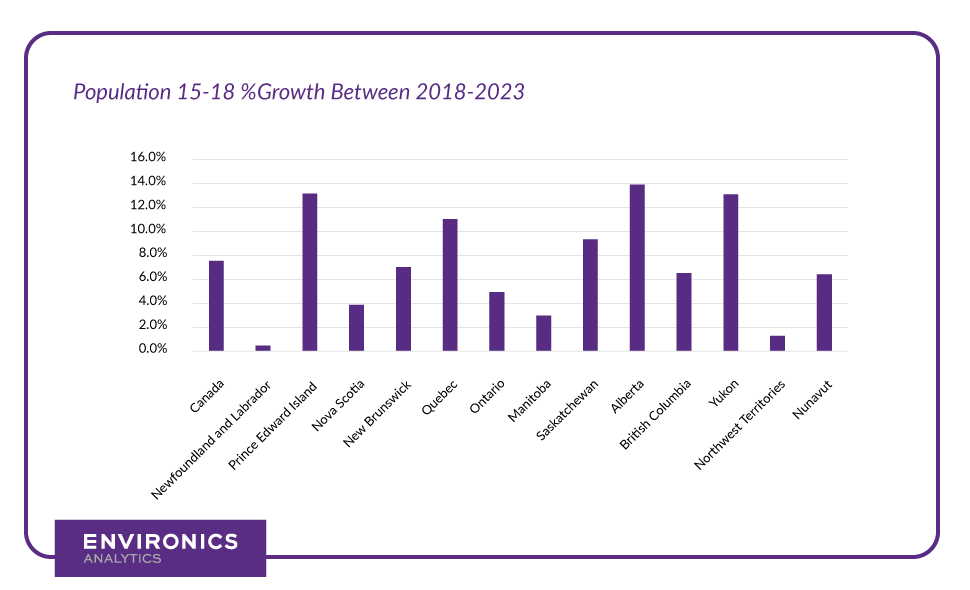
Overcoming the Cap on International Students: The Support Local Solution
The Federal Government’s new cap on international student permits for post-secondary education sent shock waves through the industry. With government funding capped and not keeping pace with inflation and a competitive domestic market, it is no surprise that colleges and universities across the country turned to international students to help bolster their funds. This new cap will hit the bottom line, and the question remains how will these institutions stay afloat?
There are two main entry points for post-secondary education. The first is direct from high school. The good news is that there are 1.7 million people aged 15 to 18 in Canada, and this cohort grew 7.5% between 2018 and 2023. Although it is a highly competitive market, the pool of potential students has been growing. The bad news is that this growth is starting to slow, with projections showing 6.5% growth between 2024 and 2029, with a further slowdown to 1.4% between 2029 and 2034.
Naturally, this distribution differs across all provinces and cities which means the impacts will be felt differently across the country. Nova Scotia, Ontario, and Manitoba saw a growth rate between 2018 and 2023 in these age cohorts well below the Canadian average at 3.9%, 4.9%, and 3.0%, respectively. Cities like Kingston (-2.6%), St. Catharines and Niagara (-2.7%), Winnipeg (-4.9%), and Vancouver (-3.3%) have experienced a decline in their 15-18-year-old populations. Being university/college towns, this brings up the question of where the domestic students will come from. Now, places like Lethridge (12.9%), Moncton (12.9%), and Calgary (12.6%) have experienced double-digit growth for this age group, which bodes well for their local institutions. But what about the rest of the country?

The second entry point is through re-training or certifications, and the profile of these learners is very different from those coming directly from high school. These students are of all ages, all backgrounds. In addition, their priorities for education are different. They may be re-tooling for a new career or upgrading their skills for a promotion. Pure demographic growth and projection data cannot help identify these individuals or help post-secondary institutions connect with them.
This all begs the question of how post-secondary institutions can reach their key audiences?
Focusing on local enrolment strategies through selective targeting will be an important focus for educational institutions to reach students interested in higher education and reduce the noise of targeting audiences that don’t align. For higher education, this means reaching prospective students, and sometimes their parents, through different mediums and messages.
With the government prioritizing high-demand labour shortages in skilled trades, health, human resources, STEM, Hospitality, and Childcare sectors, the question is not only where enrolment comes from, but where are learners interested in these sectors? Through the identification of occupation and industry preference, as well as website traffic through program searches, educational institutions can align these new guidelines to reach local students to support these educational guidelines.
The 2024 and 2025 academic years will be very challenging and telling for higher education. Through targeted and meaningful outreach to domestic markets, local students have a better chance of picking the right educational institution and servicing key in-demand sectors the government prioritizes. Educational institutions can also better align enrolment demand with curriculum adjustments to reduce the institutional impacts that international student limits have imposed.
Related Content

